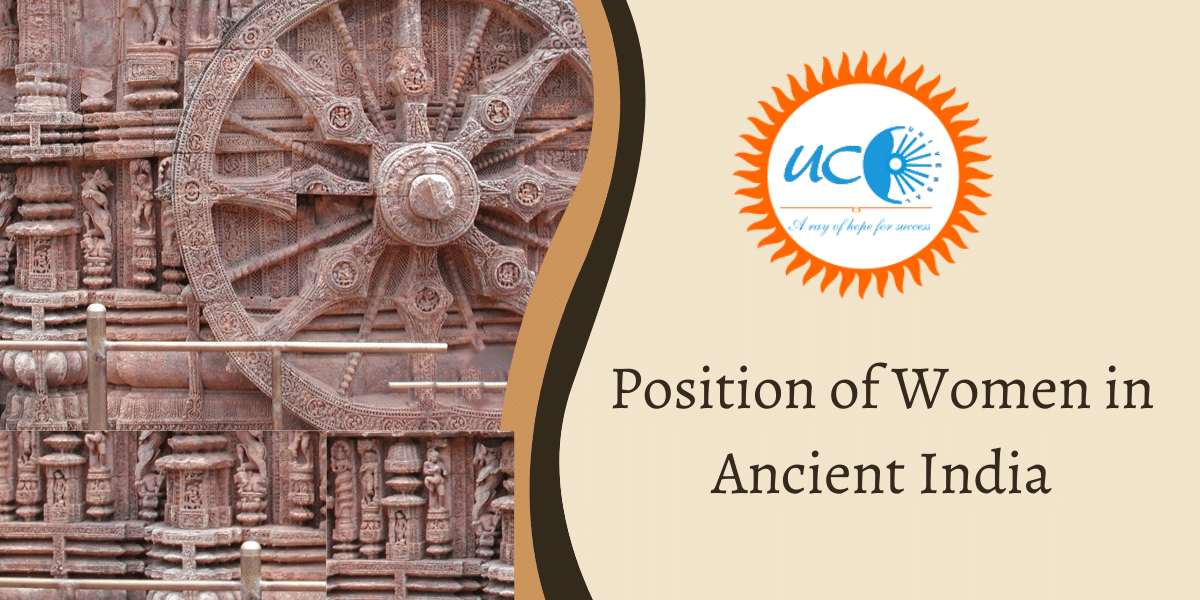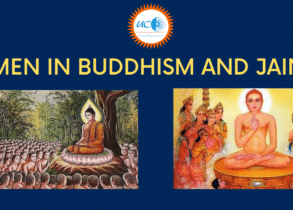Position of Women in Ancient India
- Women like other subordinated groups remained silent in writings of history around the world for a long time. This invisibility of women varied over time periods and in social contexts.
- However, the Indian writings represent a situation of visibility of women in historical writing, especially in ancient Indian historiography. The zeal to understand women’s position began during the time of colonization when modern writings on Ancient India were taking place.
- Both Western and Indian scholars undertook to study the status of women in ancient India but with different perspectives. The nationalists and social reformers of the 19th century often wrote against the backdrop of colonial rule and oppression.
- Such works provide a wealth of detail for situating women. The post-independence India witnessed major changes in the understanding of writing on women.
- There are at least two major shifts in the historiography of women. Historians attempt to look at the play of power and hierarchy in domestic as well as public life.
- Instead of separating domestic and public life, scholars argue that is important to recognize that activities described as personal have a political dimension to them.
- The domestic realm played a significant part in the control of the conjugal, sexual, and reproductive rights of women. This control was extended within the Varna as well as on the larger social level.
- The second shift is to break down the category of ‘women’. The generalization of experiences of all women irrespective of varna and economic status had distorted the understanding of women’s position in history. In this context, it becomes imperative to break down ‘women’ into different categories based on rank, occupation, and age.
Women during the Vedic Age:
- The Vedic Age spanning from 1500 BCE – 600 BCE has elicited major points of debates, discussions, and contentions from historians. The position of women is one such debate.
- The Vedic age is divided into early Vedic and later Vedic periods. The understanding of both is based on the reading and interpretations of the Vedic literature.
- The early writings on Rig Vedic women pointed out that it was the golden age’ for women. The scholars such as Altekar argued that since society worshipped women goddesses, hymns in Rig Veda were composed by women and they attended Sabha and other gatherings, this period represented the golden age of women.
- This conclusion, since it originated in the context of colonialism came to be revised later. Upinder Singh has pointed out that though hymns towards female goddess were present in Rig Veda, the numbers in relation to male deities were very few, just 12–15 out of over 1,000.
- Although the Rig Veda mentions goddesses, none of them are as important as the major gods. The social implications of the worship of female deities are complex.
- While female worship does at least mark the ability of a community to visualize the divine in feminine form, it does not necessarily mean that real women enjoyed power or privilege.
- The earlier writings also tended to focus on the elite women, ignoring the less privileged ones.
- The historians have substantial evidence to argue that the Rig Vedic society was patriarchal and patrilineal and women must have enjoyed little control over material resources.
- The domination by males towards females was a feature of all societies but the point of contention is on the degree of domination. In comparison to later Vedic literature, the status of women in the early Vedic period was not rigid as in later times.
- In the later Vedic period, as aspects of gender and household changed, the status of women also underwent modifications. Women came to be identified in terms of relations with men.
- Words such as stress, Joshua, and Jaya were associated with wifehood and motherhood. The husband had control over the material resources of the household and the reproductive potential of his wife.
- The Aitareya Brahmana states that even though a man may have several wives, a single husband is enough for a woman. The women were excluded from the study of Vedas.
- The samskaras such as upanayana were not applicable to them. Later Vedic texts also reflect the idea that the menstruation blood of women was polluting. A wife who was menstruating was not allowed to participate in sacrifices along with her husband.
- Women were expected to take up a compliant and obedient role. Shatapatha Brahmana states that a good woman is someone who pleases her husband, delivers a male child, and does not talk back to her husband.
- A desire for a son is mentioned in several hymns. The Atharva Veda contains charms to change a female fetus into a male one.
- In some texts, women were praised as well where there are hymns to receive a learned daughter, and a wife is considered as half her husband and completes him.
- Apala is described as having taken care of her father’s fields. Visalia was a woman warrior who lost her leg in the battle. Few women such as Gargi and Maitereyi participated in philosophical debates with sages in Upanishads.
- Thus, the later Vedic period reflects the changing position of women. As society expanded, the position of women also changed.





